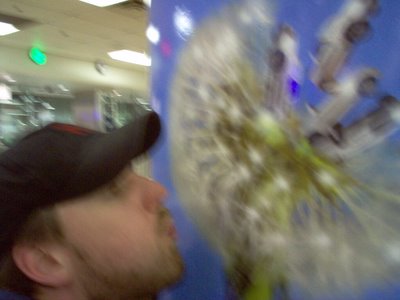From 'All Quiet' to 'Ryan,' a soldier's conscience seeks out humanity in times of war
| 
Saving Private Ryan
|
In the age of the movies, war has shifted from something like extreme weather (a heat wave, a deep freeze) to just weather itself. In the past century, we invented the term "World War" as if we had gone all the way, and we wondered if world war might be so momentous as to smother smaller wars. It is not so.
But the little, dirty wars now consume us. And we know that some silly local accident could carry us all away. Like film, war is there all the time now.
Perhaps they are brothers. For it is so easy to make war look good or attractive.
Here are 10 war films, in no particular order, that have stayed with me for years, if not decades:
1. In 1925, the new company MGM had its first great hit with World War I tale "The Big Parade," directed by King Vidor, with John Gilbert meeting a girl in France, and love being as big and moving as war. The audience was stunned to see massive troop movements and the power of artillery. Never again, they said. But Gilbert, in uniform, became a star.
2. "All Quiet on the Western Front" showed a changed attitude that our boy, Lew Ayres, was playing a young German soldier overwhelmed by the size and damage of war. The First War had destroyed old Europe; the continent would now be a fresh battleground for communism, fascism and democracy. All over Europe, cities and villages have monuments to the dead in that war. They do not add this: that hope and humanism died, too. Pragmatism took over.
3. In 1937, Jean Renoir made what people said was the greatest antiwar film ever made. "The Grand Illusion" was about the brotherhood of man, with French prisoners (Jean Gabin, Pierre Fresnay) in a German prison camp led by a wounded Erich von Stroheim. It moved people so much, it earned an Oscar nomination for best picture. Two years later, the next war began.
4. "Rome, Open City" by Roberto Rossellini was about the messy war, when partisans and resistance fighters compete with an occupying army (the Germans). It showed new levels of war -- the torture, informants, execution of prisoners. It was called neorealism, though, in its way, it was as clever and contrived as any movie. But we were learning to see what the mess looked like.
5. At the end of the "just" war came "The Best Years of Our Lives," about ordinary guys who had been soldiers once. It was a celebration of family reunion -- and it was a huge hit in the last great wave of mass filmgoing. It never showed the enemy, or fighting. But it began to let us see that if you have been to war, then its ghosts walk with you forever. It whispered a very dangerous thing: that wars are political decisions, and so political process might control them.
6. Korea. An American patrol is lost. They have a decent officer (Robert Ryan) and a killer sergeant (Aldo Ray). As they proceed to safety, the unseen enemy picks them off. In the end, they must use ultimate force. "Men in War" (1957) by Anthony Mann -- the best film on combat, its skills and futility.
7. "Paths of Glory" was about France -- and the French banned it for years. Stanley Kubrick showed a frontal assault on prepared trenches. The tracking shots were glorious, but the attack foundered. Scapegoats have to be found. Kirk Douglas is their defending officer at trials that are a foregone conclusion. The first great expose of the natural corruption in military power.
8. Nothing was bigger in war than Hiroshima. Yet Alain Resnais made "Hiroshima mon amour," a film about peace, and a French actress in love with a Japanese man, while she's reminded of the German soldier she loved once. All wars are part of the same beast.
9. "This is not Vietnam" cried the experts about "The Deer Hunter," but America never bothered to know Vietnam so who could tell? Still, had any film got the terror so well? And did any film ask the American public to consider how far war and its readiness had to do with our great cult of shooting, of arms and of "one shot"? War appeals to something profound in us. That is the ultimate horror. Perhaps we like it.
10. "Saving Private Ryan." Set in 1944 but, to date, the most vivid, plausible view of extreme combat, with men searching for their own lost hands in the carnage. Yet the film clings to the old idea that it was a duty and that we have to deserve our victories. Whereas the same Steven Spielberg makes desperate fantasies in which there is survival and nothing else.
11. To come: the first serious examination of torture in warfare ...
(David Thomson is the author of "The Whole Equation: The History of Hollywood" (Knopf) and the recent biography "Nicole Kidman" (Knopf).)






